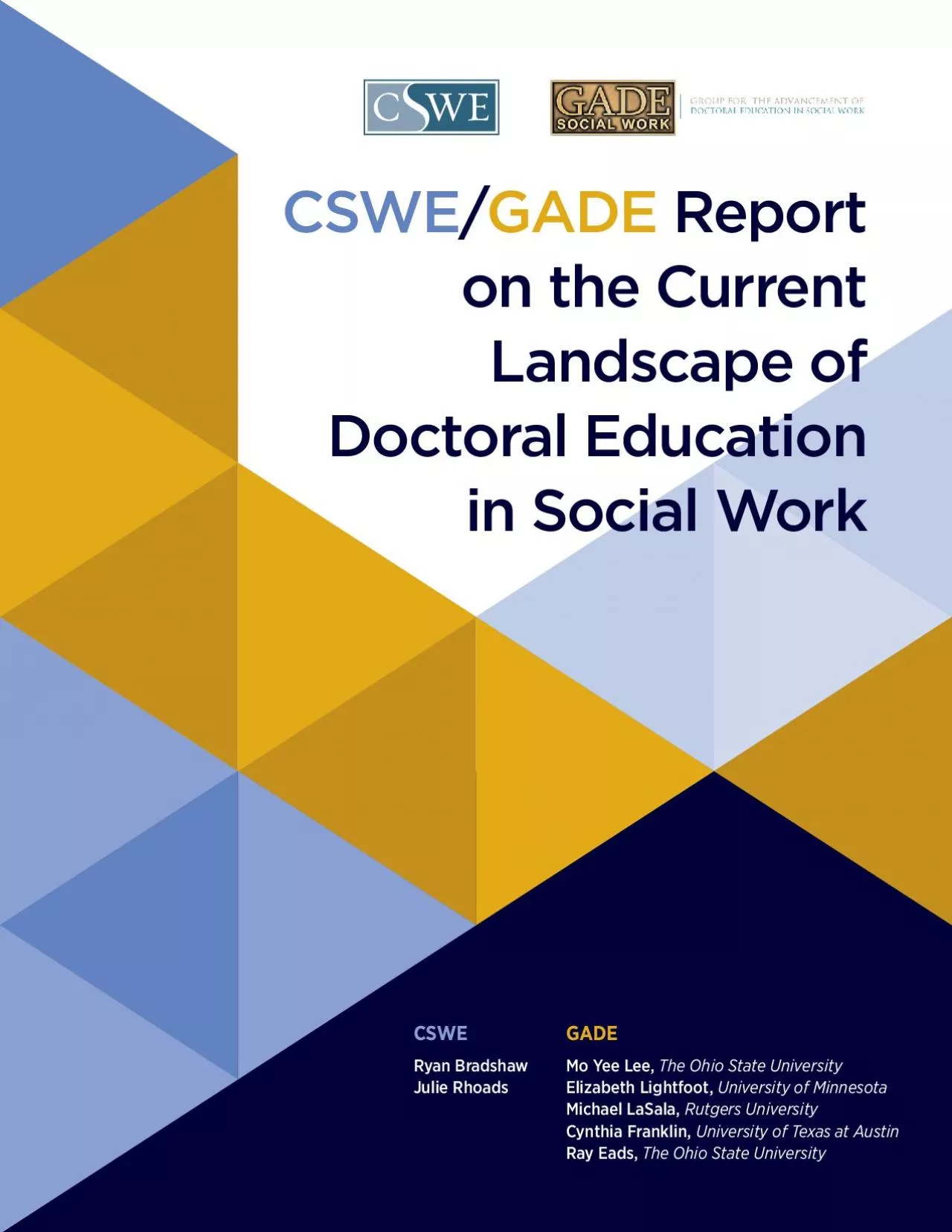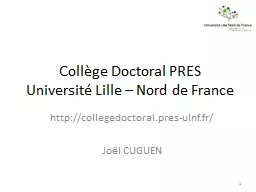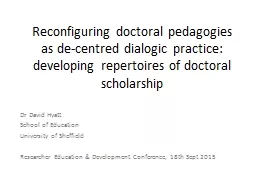PDF-CSWE Reporton the Current Landscape of Doctoral Education in Socia
Author : mia | Published Date : 2021-08-18
2ContentsGlossaryIntroductionAbout CSWE and GADEBrief History and Mission of CSWECSWE AccreditationBrief History of Doctoral Education in Social Work and GADERecent
Presentation Embed Code
Download Presentation
Download Presentation The PPT/PDF document "CSWE Reporton the Current Landscape of D..." is the property of its rightful owner. Permission is granted to download and print the materials on this website for personal, non-commercial use only, and to display it on your personal computer provided you do not modify the materials and that you retain all copyright notices contained in the materials. By downloading content from our website, you accept the terms of this agreement.
CSWE Reporton the Current Landscape of Doctoral Education in Socia: Transcript
Download Rules Of Document
"CSWE Reporton the Current Landscape of Doctoral Education in Socia"The content belongs to its owner. You may download and print it for personal use, without modification, and keep all copyright notices. By downloading, you agree to these terms.
Related Documents














